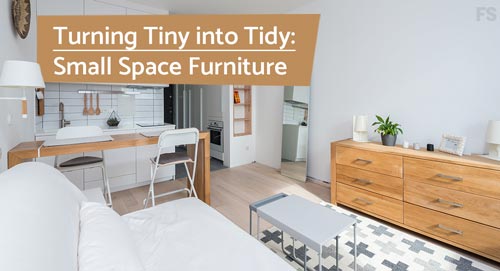Eco-Friendly Furnishings: How to Decorate with Sustainable Style

Table of Contents
- Understanding Eco-Friendly Furniture
- Benefits of Choosing Sustainable Furnishings
- How to Choose Sustainable Furniture
Recognizing the importance of sustainability in our everyday lives is not only good for the environment but also offers a fresh approach to home decor. Eco-friendly furnishings are not just a trend; they are a movement towards a more responsible way of living and decorating. Let's delve into the world of sustainable home decor and how making mindful choices can impact the world around us.
Understanding Eco-Friendly Furniture
Eco-friendly furniture is designed with the planet in mind. It's made from sustainable materials that do not deplete natural resources or harm the ecosystem. Sustainable furnishings often come from recycled materials, responsibly sourced woods, or fast-renewable resources like bamboo and cork.
Benefits of Choosing Sustainable Furnishings
Environmental Impact: By using eco-friendly furniture, we reduce our carbon footprint. Items made from recycled materials prevent the depletion of natural resources and minimize waste.
Health Benefits: Sustainable furniture pieces are typically made without harmful chemicals. This means better air quality in our homes and less exposure to toxins.
Longevity and Durability: Quality eco-friendly furnishings are built to last, reducing the need for frequent replacements and benefiting the environment by minimizing waste.
Unique Aesthetics: Sustainable furniture can provide a unique and organic aesthetic that cannot be found in conventionally manufactured pieces. It brings the beauty of the natural world inside our homes.
How to Choose Sustainable Furniture
Materials
Look for furniture made from recycled, reclaimed, or certified sustainable wood. Materials like recycled metal and glass also make for sturdy and stylish options. Ensure that textiles such as cotton or wool are organic and dyed with natural colorants.
Certifications
Check for certifications like the Forest Stewardship Council (FSC) label, which indicates that the wood has been sourced responsibly. Other certifications to look out for include the Rainforest Alliance and GREENGUARD.
Craftsmanship
Invest in handcrafted furniture. Not only does this support local artisans and small businesses, but handcrafted items are often made with traditional techniques that don't rely on mass production processes.
Upcycling and Recycling
Consider upcycling old furniture or buying upcycled pieces. This trend is not only creative and often one-of-a-kind, but it also gives new life to items that would otherwise be discarded.
Incorporating eco-friendly furniture into your home is a step towards a more sustainable lifestyle and also gives your space a unique and personal touch. It's about making informed choices and investing in pieces that are both beautiful and beneficial for the environment. As we become more conscious of our impact on the planet, choosing sustainable furnishings is one way to make a positive difference.


